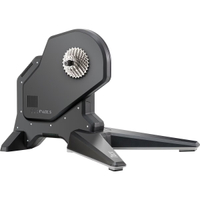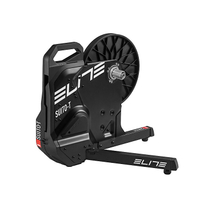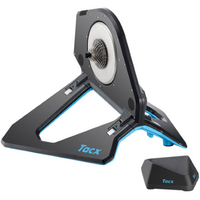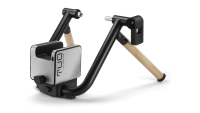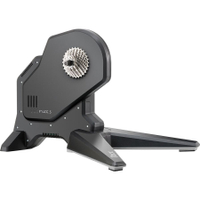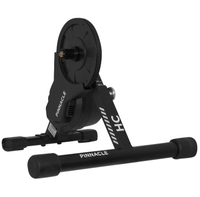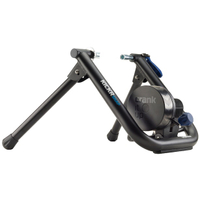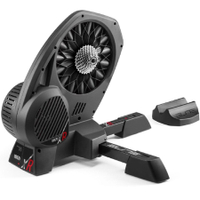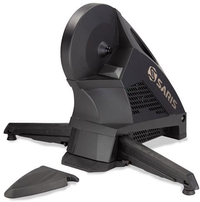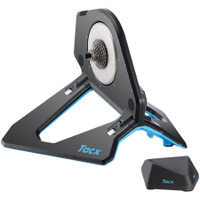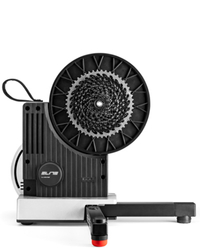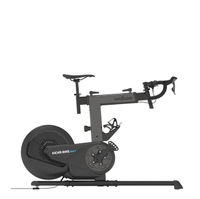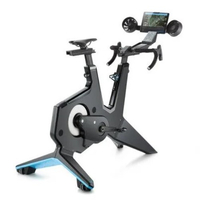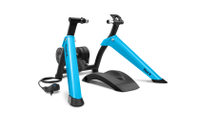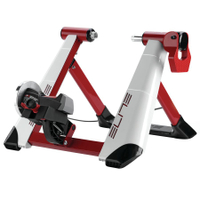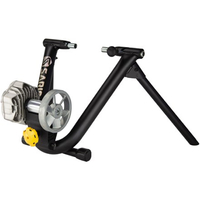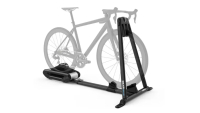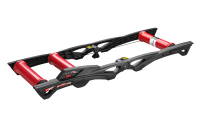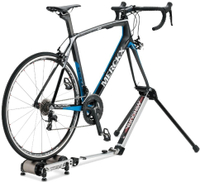Cyber Monday turbo trainer deals: Up to 70% off smart trainers from Wahoo, Elite, Tacx and more
There are loads of Cyber Monday turbo trainer deals out there, so here are our picks and a bit of guidance on how to choose
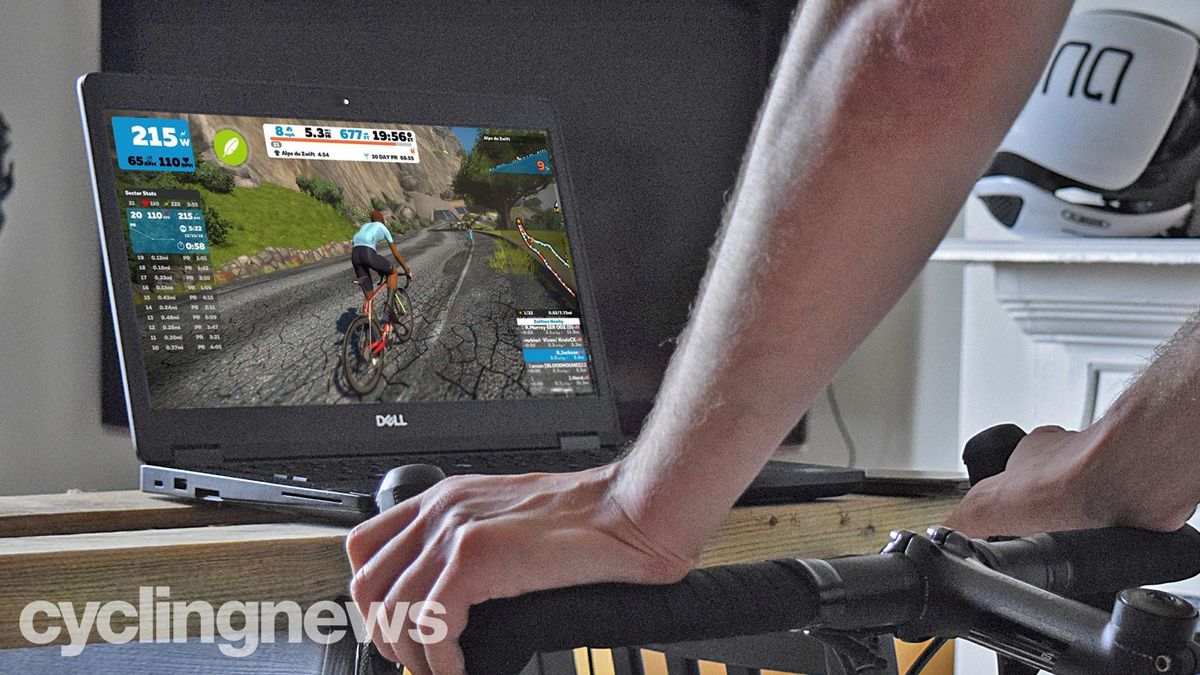
Cyber Monday is officially over for another year and we are catching our breath in the Cyclingnews deal bunker. The sales event is over but there are still loads of deals on smart trainers, smart bikes, non-interactive trainers and rollers. If you're not sure how to choose between them, we've also got loads of advice here on how to choose the right one for you.
We judge the best smart trainers based on a balance of features, performance, quality and price. When a product is discounted, a once-expensive smart trainer can instantly become great value for money, and among the best Cyber Monday bike deals.
Given not all smart trainers are created equal, knowing which one to buy could be difficult. Some people will want the lowest price available that is compatible with Zwift and other indoor cycling apps, whereas others will want a higher level spec without having to pay top money. Our experience here pays off, as we have reviewed pretty much all of the smart trainers on the market, so can judge whether a discount makes a good deal or not.
We're also armed with tools to help us know whether a discounted product has been cheaper in the past, as is often the case, and we'll use that info to decide what makes it into this list.
USA: Quick Cyber Monday Deals
- Continental GP5000 S TR: Best ever price on our benchmark tyre
- Rapha Core Rain Jacket II: 48% off with double discount
- Gore C5 Thermo Gloves: 25% off test winners
- Zwift Ride w/ Kickr Core: Zwift focussed smartbike with 20% off
UK: Quick Cyber Monday Deals
- Magicshine SEEMEE300: Best rear light on the market with 30% off
- Continental GP5000 S TR: Best ever price on our benchmark tyre
- Rapha Core Rain Jacket II: 48% off with double discount
- Gore C5 Gore-Tex Gloves: 25% off lightweight waterproof gloves
- Zwift Ride w/ Kickr Core: Zwift focussed smartbike with 20% off
Recent updates
Deals last checked: Tuesday 3rd December 2024 16:50 GMT
Quick Cyber Monday turbo trainer deals
36% off Tacx Neo 2T
$1,399.99 $899.99 at Competitive Cyclist
47% off Tacx Flux S
$749.99 $399.99 at Competitive Cyclist
70% off Pinnacle HC
£700.00 £210 at Evans Cycles
40% off Elite Direto XR-T
£829.99 £499.00 at Evans Cycles
33% off Tacx Flux S
£599.99 £399.00 at Sigma Sports
Cyber Monday smart trainer deals (USA)
Smart trainers, by definition, feature 'smart' connectivity in the form of Bluetooth and ANT+. This allows the trainer to connect to your computer/phone/tablet and allows the app (Zwift, et al) to control the resistance in line with virtual hills or workout intervals.
Get The Leadout Newsletter
The latest race content, interviews, features, reviews and expert buying guides, direct to your inbox!
In this section, we'll break down the deals by trainer type, and explain whether or not they will be compatible with Zwift (and others) straight out of the box.
As a broad overview, smart trainers, smart bikes and smart rollers will be compatible, whereas basic trainers need you to bring extra sensors along to ensure compatibility.
Tacx Flux S: $749.99 $399.99 at Competitive Cyclist
47% off - It's been on the market for a few years now, but you could do a lot worse than the Flux S from Tacx. It's not quite as accurate as some top-tier models, having +/- 3% power accuracy. But if you want a sturdy, powerful trainer it's worth a look. Its legs don't fold though and we think this is worth pointing out.
Check out our in-depth Tacx Flux S smart trainer review
Elite Suito T: $499.99 $399.99 at Competitive Cyclist
20% off - The Suito T offers Elite's Italian style in a trainer that folds to a compact size and is made easier to carry by its in-built handle. It can offer resistance up to 1,900 watts and simulate 15% gradients. It's compatible with QR and thru-axle bikes and you can buy adapters for Boost, Super Boost and other axle standards, while ANT+ and BLE offer connectivity to pretty much any device.
Tacx Neo 2T: $1,399.99 $899.99 at Jenson USA
36% off - The Neo 2T is a high-spec indoor trainer with an electronic flywheel that offers real-world levels of inertia, as well as advanced pedalling analysis and cool features like rumbling when your Zwift avatar goes over rough surfaces. It's been around for a while, so it misses things like WiFi connectivity (as per Wahoo Kickr V6), but it's still among the best trainers around. If the high spec and accurate power readings are important to you, then this is a good deal worth considering.
*It looks like this item is currently on back order at Jenson, but the discount is still there*
Elite Tuo: $249.99 $199.99 at Competitive Cyclist
20% off - Elite's Tuo trainer is a wheel-on option with a spec that includes wooden legs to help absorb vibration. It's compatible via ANT+ and BLE with indoor cycling apps and offers sensorless cadence measurement, so there's one less device needed for your workout.
Cyber Monday smart trainer deals (UK)
Tacx Flux S Smart: £599.99 £399.00 at Sigma Sports
33% off - The Tacx Flux S is one of the more affordable direct drive trainers. There's £200 off here and we gave this trainer a four-star review in our own testing. It's compatible with a range of bikes and offers up to 1500 watts, 10% inclines and Bluetooth/ANT+ technology.
Pinnacle HC: £700.00 £210.00 at Evans Cycles
£490 off - Very similar in form and function to other lower priced smart trainers, the Pinnacle HC is among the cheapest available and is impressively cheap for a direct-drive trainer. You will need a cassette, though, so factor that into your spending budget.
Wahoo Kickr Snap: £249.99 £174.99 at Tredz
30% off - Tredz has a deal on Wahoo's entry-level smart trainer. The Kickr Snap is a wheel-on trainer but still offers variable resistance to simulate climbs in Zwift, with power accuracy of +/-3 percent.
Elite Suito T: £639.99 £449 at Tredz
30% off - The Elite Suito is a stylish looking trainer with folding legs for great stability. Its integrated handle makes for easy carrying when you want to store it. e rated its realistic ride feel and at this price it's one of the lowest priced smart trainer options from a quality brand.
Saris H3: £749.99 £449.00 at Evans UK
40% off - The H3 is quite long in the tooth in its design when compared to the high-end trainers it once competed with. It's 2% accurate, which isn't market leading (1% is) but still more than good enough. It does, however, boast a good maximum resistance of 2000 watts, and a pretty good gradient simulation of 20%. If those specs or the folding legs are important to you, then this new price is pretty competitive. Be sure to consider the Pinnacle HC though, as that's less than half the price of this, although with lower specs and non-folding legs.
Tacx Neo 2 Special Edition: £1,199.00 £799.99 at Tredz
33% off - The Neo 2 can be run without mains power, though when plugged in, it can power the flywheel to simulate descents. It can also mimic rough surfaces, handle an output of up to 2200 watts and can simulate gradients of up to 25% with an accuracy of 1%. The flywheel is 'virtual' (powered by a motor), and therefore is equivalent to a massive 125kg, for a more realistic ride feel.
Elite Suito T: £639.99 £449.99 at Tredz
30% off - The Elite Suito is a stylish looking trainer with folding legs for great stability. Its integrated handle makes for easy carrying when you want to store it. e rated its realistic ride feel and at this price it's one of the lowest priced smart trainer options from a quality brand.
Elite Justo: £999.99 £699.99 at Tredz
30% off - Elite's Justo offers claimed +/-1% power accuracy via Elite's optical system, which also offers automatic calibration on start-up. There's a 6.2kg flywheel and flex feet for side-to-side motion and a more comfortable, realistic ride feel.
Cyber Monday smart bike deals
While trainers need you to mount your own bike onto them, smart bikes offer everything: pedals, saddle, handlebars and more. They're also easily adjustable so that multiple people in one household can use them, and they typically come with belt-driven gear, which is quieter, cleaner, and more durable than the chain on your bike. The downside to all this is that smart bikes are far from the cheapest Zwift setup available.
Wahoo Kickr Bike Shift Smart Bike Reconditioned: $2,299.99 $1,999.99 at Wahoo Fitness
Save £300 - The Kickr Bike Shift is Wahoo's lower-priced smart bike trainer. This reconditioned unit delivers a quiet ride and is easily adjustable for multiple users. WiFi connectivity means that there's fast data transmission to Zwift or other indoor apps. There's also a discount on the premium Kickr Bike at Wahoo. UK riders can purchase the Kickr Bike Shift for £2,199.99 instead of £2,699.99 and again there's a discount on the Kickr Bike too.
Tacx Neo Bike Smart Bike: £2,299.99 £1,899.99 at Tredz
Save 17% - Tacx's Neo Bike takes the functionality of the Neo trainer and packages it into an indoor bike, complete with two fans to help keep you cooler. There's a 4.5 inch display built in, as well as two USB charge ports and a tablet holder, while easy adjustability makes it easy to use the trainer for multiple riders.
Basic trainer deals
On their own, basic trainers are not Zwift compatible. They don't have power sensors or Bluetooth or ANT+ connectivity, and therefore they cannot sense how much power you're pushing through the pedals, nor can they share any information with your chosen indoor cycling app.
They do, however, enable you to mount your bike onto them and provide resistance against your pedalling. Add in a speed sensor and cadence sensor, or a power meter, and these sensors will transmit the necessary info to Zwift.
Tacx Boost: $329.99 $169.99 at Competitive Cyclist
48% off - The Tacx Boost is an entry-level trainer that here comes bundled with a front wheel riser block and a Garmin speed sensor. You control resistance manually via a wired bar-top controller. It's a decent package from a quality brand, now part of Garmin, which will get you Zwifting for minimal expense.
Elite Novo Force: $199.00 $159.20 at Competitive Cyclist
20% off - Another simple, non-interactive trainer option, the Novo Force offers eight resistance levels with wide wheel size compatibility and a stable design that's compact when folded. It's a good option for warm-ups and for basic workouts indoors at an affordable price.
Saris Fluid 2: £229.99 £99.99 at Tredz
56% off - Tredz has a rock bottom deal on this Saris trainer for UK users. Add a speed sensor and your ready to go on Zwift or your other preferred training platform. If the Fluid 2 is too pricey, how about the Saris Basic trainer with magnetic resistance? It's just £49.99 at Tredz.
Cycling rollers
Rather than bolting your bike to the trainer via the rear axle, with rollers you simply balance your bike on top, and as your wheels turn, your steering inputs keep you upright. It can take a bit of a learning curve to get used to it, but it becomes natural after a bit of practice.
Like trainers, rollers also come in 'smart' and 'basic' formats. The same primary differences apply in that smart rollers are Zwift compatible, while basic rollers aren't. The one caveat to this is that basic rollers don't typically tend to offer any resistance to your pedalling. They're fine for riding at low intensities and high cadences, but you'll find them lacking if you want to do anything more taxing.
All rollers, smart and basic, are very good for working on pedalling technique, as they require you to pedal smoothly and maintain balance in order not to crash.
Wahoo Kickr Rollr: $599.99 $499.99 at Wahoo Fitness
16% off - The Wahoo Kickr Rollr trainer gives to variable resistance in a set of rollers you can't fall off, as the front wheel is clamped in place. You don't get a power meter, but the advantage of the Kickr Rollr is that you can just plonk your bike on top and start riding, no fiddling with wheels required.
In the UK, Sigma Sports has a discount on the Kickr Rollr bundled with a Powrlink Zero single sided power meter for £949, down from £1,200.
Elite Quick Motion Rollers: £419.99 £335.99 at Tredz
20% off - Elite's classic rollers include self-centring rollers, making it harder to ride off the side. They're also easy to fold, store and transport to evens for a warm-up. There's three-stage magnetic resistance, so you can get a harder workout or spin, as you prefer.
Elite Arion Parabolic Rollers: £220.00 £197.99 at Sigma Sports
10% off - Sigma Sports has this discount on the more basic Arion rollers, as well as the version with magnetic resistance. The Arion rollers are easily adapted to different bike wheelbases and fold in half for easy storage. Add a sensor and you can workout on indoor apps, including Elite's own training platform.
Minoura FG220 Rollers: £289.99 £231.99 at Tredz
20% off - Another option if you don't like to fall off your rollers, the Minoura FG220 anchors your bike via the dropouts. That allows Minoura to reduce the width of the rollers themselves, so the rollers are very compact and easy to store or transport.
Guide to getting onto Zwift
That's the turbo trainer deals covered, but if you're here with questions, then this is the section for you. Throughout the remainder of this page, we'll walk you through everything you need to know when setting up your indoor cycling setup for the first time.
Zwift cost
At the end of the 14 day free trial period, Zwift is priced as a monthly subscription of £17.99 / US$19.99 / AU$29.99 per month. An annual membership lowers the price, with 12 months for the price of 10, with a money-back 30 day guarantee.
For context, TrainerRoad is similarly priced at US$21.99 per month, although there is an annual subscription of $209.00 which equates to a better price per month. You can subscribe to Wahoo X at $14.99 / £12.99 per month (or $149.00 / £135.00 per year) to get access to Wahoo's training library.

Which trainers are compatible with Zwift?
In this section, I will run through all the different ways you can immerse your workouts into the virtual world of Zwift. I will explain the technology you need, the cost, and how 'connected' you'll become.
Some solutions will only transmit information in one direction, in that they will send your pedal strokes to the game and move your avatar through Zwift's virtual worlds. Other solutions will transmit information in both directions, meaning that in addition to the above, the in-game gradient will affect how hard it is to pedal. ie, if you're going uphill, the resistance will increase.
Jump to your chosen Zwift setup:
1. Basic turbo trainers
2. Power meters
3. Power meter pedals
4. Smart wheel-on turbo trainers
5. Smart direct-drive turbo trainers
6. Rollers
7. Premium: Smart bikes
8. Alternative: Gym subscription
Zwift itself is reasonably inexpensive, but it's the required hardware that can add up to make getting onto Zwift a rather expensive investment. If you don't take advantage of the Black Friday sales, the most premium setups can cost thousands and that's before you consider the cost of the bike, possible additions of a computer or tablet, as well as a fan. If you're planning on running Zwift in an unpowered garage or shed, you may even need to factor in the cost of an extension lead, WiFi booster, and even the light bulbs.
The thought of all this investment might put you off, but thankfully I'm here to help, and by a stroke of fortune (misfortune for me), I've had to deal with all of the above.
By now, you'll know there are a couple of types of turbo trainers: direct-drive and wheel-on. You'll also know that some trainers are smart, meaning the resistance can be controlled by software (Zwift, TrainerRoad, etc), whereas others are 'basic', and will need to be controlled by your gear selection or a manual resistance controller that clamps to your handlebars.
While Zwift is undoubtedly the biggest of the various indoor cycling apps, it's worth noting that the following setups will also work with other training software such as TrainerRoad, Wahoo X, Rouvy and more, so once you're set-up, you can use whichever you please.
Basic trainers
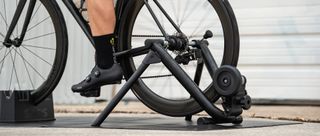
Basic trainers are not compatible with Zwift by themselves, but you can still use them with the app. All you need to add is a speed sensor. With a simple trainer and speed sensor, Zwift calculates power output based on the speed of the rear wheel. Zwift engineers have tested and mapped the resistance curve of almost all trainers on the market so that they can use the speed reading to calculate your power, which is used to drive your avatar.
The downside is that there will be a delay between power output and your in-game avatar's response. This isn't too problematic for long steady efforts, but for sprint workouts or Zwift races, a 'smart' trainer or power meter will offer a smoother in-game experience.
To fit your bike onto the turbo trainer, you'll also need an adaptor for the rear axle. This is where it can get a little bit confusing, as you'll need to use the correct adaptor for your bike. If your bike uses quick-release axles, the most common rear spacing (the distance between the dropouts) is 130mm for road bikes. If your bike uses bolt-thru axles (an axle that goes through the hub and threads into the frame), then check the axle itself for size spec. The most common on road bikes is 142 x 12mm, but it should be written on the axle.
If you don't have a bike to use, our roundup of the best bike for cycling indoors will help, check out our roundup of cycling deals to see if you can grab a bargain, or jump to our gym-based Zwift solution below.
You'll also need the speed sensor itself. This simply wraps around your rear hub and will connect to Zwift using either ANT+ or Bluetooth. Find a sensor that speaks Bluetooth to avoid having to buy an ANT+ adaptor for your laptop or tablet.
Power meters
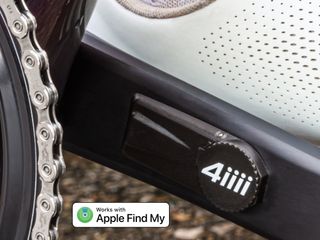
A slightly more accurate method is using Zwift with a power meter.
It'll cost more than a speed sensor, but it will come with added accuracy (and immediate responsiveness), along with the benefit of being able to take your power measurement outdoors too. The initial spend might be higher, but if you intend on using your bike outside as well as on the trainer, you will benefit from a single consistent reading of power across all of your training sessions.
However, this method will still rely on the basic resistance of your trainer, rather than having your trainer respond to in-game gradient changes.
I recommend choosing something with Bluetooth compatibility as well as ANT+ because it will communicate with computers, phones and laptops. You can overcome that with an ANT+ adapter, but that's an extra cost we're trying to avoid.
A power meter paired with your device running Zwift will increase the accuracy of your in-game experience and will be a great training tool for intervals and steady-state training, theoretically resulting in long-term performance gains.
Your choice of power meter will depend on your bike and its compatibility requirements. More details can be found in our guide to the best power meters.
Power meter pedals
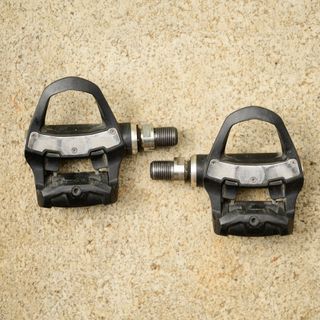
Power meter pedals do the same thing as any power meter, but instead of being built into your crank, they are built into your pedals, which can be very useful as it's easier to transfer them between bikes.
They're generally more expensive than a budget crank-based power meter and are often around the same price as the cheaper direct-drive trainers, but they come with a trick.
The benefit to owning power meter pedals over a smart turbo trainer or any other power meter is the flexibility to use them in multiple scenarios, given their small size and broad compatibility. You can use it at home on your own Zwift setup, outside across multiple bikes, and even at the gym.
If your gym doesn't have smart bikes like a Wattbike, with a pair of power meter pedals and a polite request, your gym might allow you to swap them onto one of their non-smart indoor bikes - the type used for group classes. Pair them with your Bluetooth-enabled phone or tablet and you've got Zwift at the gym. It's great for those who are often on the road with work and don't have the means to take their bike and turbo trainer with them. I've done it myself numerous times; it's much easier to pack a pair of shoes and pedals, and it means I don't have to resort to going for a run.
Smart wheel-on turbo trainers

The prices of direct drive smart trainers are continually dropping, making wheel-on smart trainers increasingly redundant, and I wouldn't recommend buying something in this middle section of the market, especially not at the retail price. However, I'm still including it here for your information, and because there are a few discounted products around that may be worth considering.
Smart wheel-on trainers are, as their name suggests, smart. Their resistance can therefore be controlled by software and work in perfect harmony with your Zwift experience. This means that when the road goes uphill in the game, pedalling gets harder just like it would in the real world.
They are 'wheel-on', which means you keep the wheel on your bike and place your tyre against a roller, while a special rear axle holds the bike in place on the trainer. Resistance is applied to the roller, which transmits through your tyre and wheel to your pedals.
The problem here is that resistance is usually limited by the friction between your tyre and the roller. You will also need a trainer-specific tyre with a hard rubber compound, or you run the risk of wearing through your rear tyre quickly. Also, the small flywheel offers minimal inertia, which means it can often feel like you're pedalling through treacle rather than rolling along a smooth road. Some are better than others in this regard, but they are rarely as good as direct-drive trainers.
Smart direct-drive turbo trainers
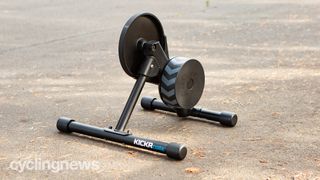
Direct-drive trainers require you to remove your rear wheel and then replace it with the trainer itself, connecting your groupset to a cassette that's fitted directly to the flywheel.
It offers a much-improved experience, a true road feel and a considerably better experience compared to a wheel-on trainer. Not only does it prevent that laboured pedalling-through-treacle feeling, but it's also considerably quieter and doesn't chew through tyres like kids doing skids.
Be aware that budget trainers don't always come with a cassette, so you'll need to factor that into the cost. The top-spec direct-drive trainers add extra niceties such as vibration (to provide off-road feel on off-road in-game sections) and motorised freewheeling (to prevent the flywheel from stopping, requiring a sprint to get it going again when your avatar is riding downhill) and they generally have higher maximum resistance and incline simulation.
Yes, they're a far cry from the cheap Zwift setups that this article promised at the top, but if you're looking for a premium turbo trainer setup, the good news is that prices are coming down all the time, and there are plenty of deals around.
Rollers
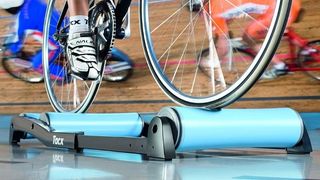
Rollers are the left-field inclusion here, but they certainly warrant a ticket to the party. They differ in that your bike isn't fixed into place, and as such, it requires greater concentration in order to avoid riding off the side. They take a bit of getting used to - just search YouTube for 'first-time cycling rollers' for proof - but they're great for working on balance and core stability whilst riding.
However, while not impossible, a sprint session is probably better undertaken on a turbo trainer.
The exception is the Wahoo Kickr Rollr, which locks your front wheel in place, so no falling off, and offers variable resistance too.
Smart bikes
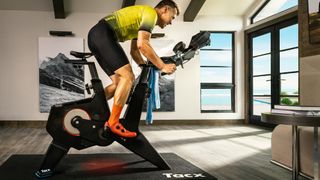
All of the options above assume you already have a bike to use for your Zwift setup, but what if you don't? Enter the smart bike. These all-in-one solutions take the brains from within a turbo trainer and fit them into a complete bike system, removing the need to use your own bike.
The positives are that they're permanently set up and ready to go. They often use a belt-drive system and electronically-adjusted resistance to mimic shifting instead of a chain-and-derailleur, which combines to decrease noise and increase durability.
However, they're big and heavy, so they need to be given a dedicated space in your home; they can't just be hidden under the stairs after you're finished. They're also not cheap - far from the cheapest Zwift setups available - but they're a great premium solution for indoor cycling's most dedicated participants, as well as multi-cyclist households, and they're also not immune to inclusion in the sales.
Gym subscription
If you don't have a bike, and you can't afford a smart bike, then what are your alternatives? Buying both a bike and a basic trainer could be an option, but allow me to present an alternative: the gym subscription.
This can be the cheapest Zwift setup of them all, especially if you're already paying for a gym subscription anyway.
If you're a member of a gym, there's a chance your gym already has a Zwift-compatible bike with a built-in power meter such as a Stages Bike or Wattbike.
If you're unsure, you can either check with the gym's staff as to the facilities available or just open up the settings on your phone and search for Bluetooth devices. If a smart bike is found, it'll likely connect up to Zwift without a hitch. Bring a power bank though, as Zwift can be battery-intensive for your phone/tablet, and other gymgoers won't appreciate you trailing charging cables across the floor.
Other things you'll need for Zwift
I've covered your trainer requirements extensively so far, but as mentioned at the top, there are other things you'll need for Zwift, and that'll be explained here as a series of questions and answers.
Do you need internet for Zwift?
Yes, you'll need an internet connection. This can come in the form of mobile data (4G / 5G) but be careful with your data allowance if choosing this option - in my test, a one-hour-long Zwift ride used approximately 300MB of data.
If you're Zwifting in your spare bedroom, then you're probably fine for signal, but if you're in the garage or shed, then you might have extra needs. Running an ethernet cable from your house to the garage mightn't be the most permanent solution, but it might be the only option you have. If you're considering this method, a second router or WiFi booster is an alternative idea. I use Google Nest at home, which bounces the WiFi to my garage.
Do you need mains power for Zwift?
Not necessarily, but ideally yes.
A select few of the most feature-rich turbo trainers, such as the Tacx NEO 2T, will work without mains power, but you'll probably also want a fan and you don't want your laptop's battery life to cut your ride short.
For anyone looking to run Zwift in a garage or outbuilding, a power supply might not be a guarantee. The options here will very much depend on your circumstances. If you're unable to run a permanent power supply, then an extension lead and temporary ethernet cable might be the only option. You can get a 50m extension lead from Amazon for around $40/£30, and a similar length ethernet cable for around half that.
There's a good chance it'll be dark in your garage too, but you can get plug-in light bulbs from Amazon for around $20/£15, which are essentially a cable with a plug at one end and a lightbulb connector at the other. Battery-powered LED lights are a wire-free alternative.
If an extension lead isn't going to work for you, then a generator might be a solution. I've looked into solar and rechargeable generators, but these typically don't have enough juice to power a full workout, with the laptop, fan, trainer and lights running. Therefore, a petrol/diesel generator might be the only solution, but it's not as good for the environment - or just go for a ride outdoors.
Do you need a computer for Zwift?
Yes, you'll need a Zwift-compatible computer. This can be in the form of a PC, a laptop, a tablet, Apple TV, or even your smartphone. The majority of us will already have something that technically can run Zwift, but in our experience, a phone screen is too small to read the data numbers when riding at or near your limit. Check out our guide to the best computers and tablets for Zwift for a few recommendations.
Is Bluetooth or ANT+ best for Zwift?
You'll need Bluetooth or ANT+ connectivity to run Zwift, and neither one is necessarily better than the other. ANT+ can typically connect to multiple devices simultaneously, whereas Bluetooth usually has a limit. However, no smartphone, tablet or laptop will have ANT+ built in, whereas most have Bluetooth.
Almost all new turbo trainers, power meters and speed sensors can work with both. However, if you're using an old power meter, then it may be ANT+ only, in which case, you're likely to need an ANT+ adapter for your computer. Our 'what is ANT+' guide takes a deep dive into the technology.
If you're using Bluetooth, then there's a greater chance your device will connect without the need for an adapter, which will obviously save you some money.
Should I use a fan with Zwift?
You technically don't need a fan, but once you've tried cycling indoors without one, we promise you'll want one more than you've ever wanted anything before.
The oncoming air that you get when cycling in the real world performs a huge role in cooling you down. When you take that away by remaining stationary, you very quickly overheat. Your body's natural response to this is to sweat... a lot.
This gets out of the realm of 'cheap', but if you want a real pain cave hack, buy as many fans as your budget will allow, then plug them all into smart plugs with remote control (or Amazon Alexa). This way, you won't need to get off your bike to switch them on and off, and you can leave them switched off for the first few minutes until you need them. Or go the whole hog and buy the Wahoo Kickr Headwind, which varies its output as your hart rate or in-app speed increases, with a maximum airflow of 30mph / 48km/h.
What accessories can improve your Zwift experience?
Desk
If you're running a laptop, you'll need to be able to reach it so you can use the Zwift menu without having to climb off the bike. Brands do make dedicated turbo trainer desks, such as the Wahoo Kickr Desk, but for the budget-conscious, you can often make do with a less dedicated solution, such as an ironing board or some adjustable shelving from your local hardware store.
Sweat protector
To protect your bike against corrosion from the cumulative drips of salty sweat, you can get a dedicated sweat protector to catch the drips. The majority of sweat will drip from your face and shoulders, so it's the handlebars that need the most protection. Therefore, a towel placed atop the bars and stem will generally do a good job - with the added benefit of being able to wipe your brow every so often. For the budget-conscious, an old sweatshirt draped over the handlebars and top tube can have the same outcome. Don't drape anything over your bars when using rollers as if it gets caught in the front wheel, you'll be in trouble.
Turbo trainer floor mat
Unless you're in the garage or shed, you'll probably want to protect your floor from your salty sweat droplets, not to mention the damage caused by the feet of your turbo trainer. A turbo trainer mat will offer this protection and they are available pretty cheap, but an old yoga mat or even an offcut of kitchen linoleum will do the same job. Our tried and tested method is to use interlocking floor mats designed for gyms or garages. Not only do they offer protection, but they also offer a few millimetres of cushioning which helps with your natural rocking motion whilst riding.
A turbo trainer-specific tyre
If using a wheel-on turbo trainer - especially a cheap one - the roller's interaction with the soft rubber of your rear tyre can quite quickly churn through your rubber. Dedicated hard-wearing turbo trainer tyres exist to overcome this very problem. You could invest in a dedicated turbo trainer tyre, or alternatively, if you regularly ride on the road, upgrade your best road bike tyres and recycle your old part-worn tyre for indoor use only.
Riser block
If you're using a wheel-on trainer, it will lift your rear wheel off the ground, which tilts you forward into an unnatural position. A riser block goes beneath your front wheel to level you out again. They don't need to be anything special, the cheapest versions can be found cheaply at Amazon. Or you can save that and slide a piece of wood or a few books (ideally taped together so they don't slide) beneath your front wheel. However you choose to bodge this, just make sure it's stable enough not to topple during sprint efforts.
Zwift Cog and Click/Zwift Play
I mentioned the need to reach your computer earlier. A cleverer solution is the Zwift Cog. This fits on a direct drive turbo in place of your cassette and provides virtual shifting with a single cog at the rear and up to 12 speeds.
The shifting is controlled from your bars by the Click controller.
But Zwift offers an even more sophisticated option with the Zwift Play controllers. These come in a pair and hook over your bars, acting like virtual handlebar shifters. They include a series of buttons too, which you can use to control Zwift and navigate through its menus without needing to use your computer screen. They even provide in-game steering and power-ups.
Where should I spend my money first?
If you're setting up Zwift for the first time and your budget is limited, our advice would be to invest your money in a smart trainer and the fan to begin with, and then add to the experience later with the peripherals. Look for a turbo trainer deal to ensure you're getting the most bang for your buck.
More Cyber Monday deals
- Cyber Monday bike deals: The best savings for cyclists in 2024
- Cyber Monday bike helmets: Safety on a budget for road and off-road use
- Cyber Monday cycling clothing: Kit out your cycling wardrobe without paying a fortune
- Cyber Monday cycling shoes: Save on summer and winter kicks
- Cyber Monday electric bikes: Power your way to savings
- Cyber Monday turbo trainers: Indoor cycling on a budget
- Cyber Monday kids bikes: They grow so fast, so don't pay full price
- Cyber Monday Garmin deals: Smartwatches, cycling computers and more
- Cyber Monday GoPro: Shoot for the moon with top-quality action camera deals
- Cyber Monday Rapha: Big deals on the British clothing brand
- Cyber Monday Wahoo: The best prices on Wahoo's range of cycling tech

Josh is Associate Editor of Cyclingnews – leading our content on the best bikes, kit and the latest breaking tech stories from the pro peloton. He has been with us since the summer of 2019 and throughout that time he's covered everything from buyer's guides and deals to the latest tech news and reviews.
On the bike, Josh has been riding and racing for over 15 years. He started out racing cross country in his teens back when 26-inch wheels and triple chainsets were still mainstream, but he found favour in road racing in his early 20s, racing at a local and national level for Somerset-based Team Tor 2000. These days he rides indoors for convenience and fitness, and outdoors for fun on road, gravel, 'cross and cross-country bikes, the latter usually with his two dogs in tow.
Most Popular





